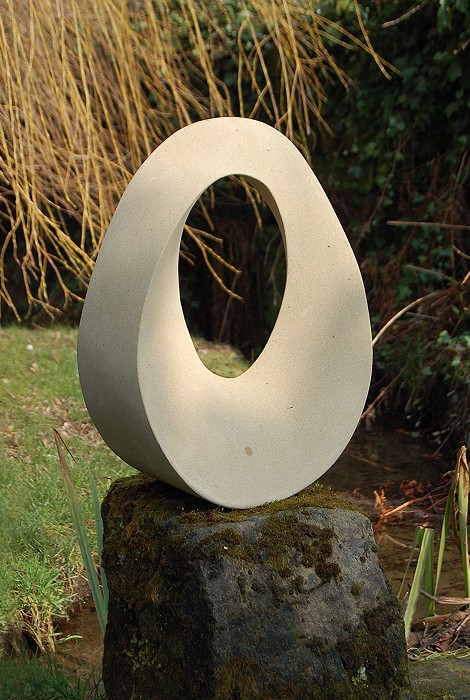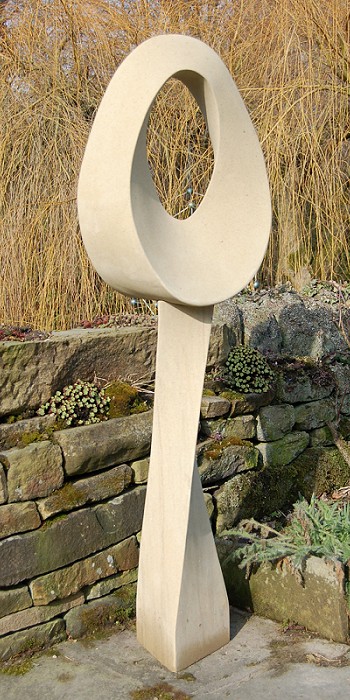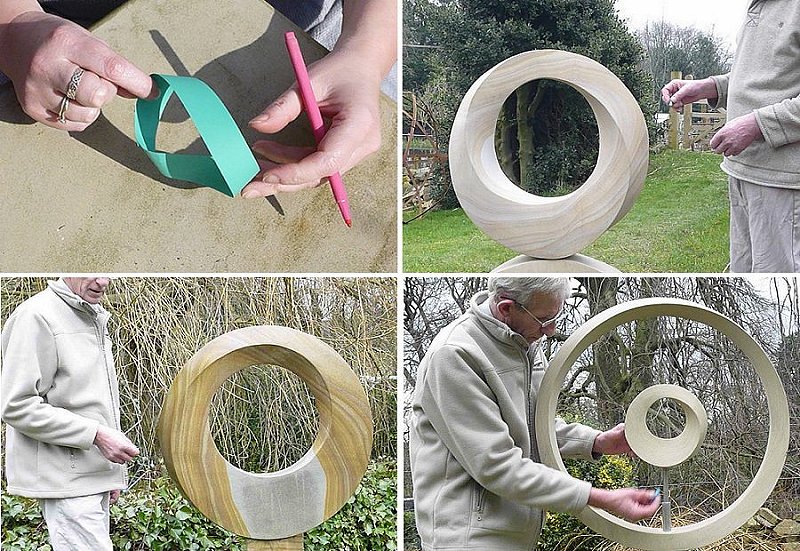|
Cundy, Rollett & Möbius Egg II - 2013 - [sold]
A unique geometric sculpture, hand-made from sandstone quarried at Thurlstone in Yorkshire. This sculpture is for sale with or without a stand.
|
 |
 |
Height: 22½" Width: 17" Maximum depth: 8". With a stand, the overall height of the sculpture is 53".
This sculpture was designed to be set in concrete covered with pebbles, slate, paving or grass.
|
The outline of the egg is an example of a Euclidean four point compass and straight edge egg construction.
Many more such constructions are to be found in Robert Dixon’s marvellous book Mathographics (1).
This particular construction was first published by two Cambridge mathematicians, Cundy and Rollett (2), as a dissection puzzle to be cut out of card. It is fairly easy to reassemble the egg, but a variety of other shapes can also be made from the pieces, including fish, geese, ducks, swans and parrots as well as many other geometric shapes.

If the outline of the sculpture belongs to Cundy and Rollett, the twisting nature of the inside of the egg owes much to the mathematician August Ferdinand Möbius who first examined this strange form in the nineteenth century and gave us the Möbius strip.
Take a strip of paper, twist it through 180°, turn it round into a torus and glue it together. Were you to trace a line along the middle of the strip, you would find that this strip of paper, which appears to have two surfaces, has in fact got only one continuous surface. Similarly, the Möbius strip has only one edge, not two as one might suppose.
The Möbius strip is a conundrum – what are the implications of warping a plane through three dimensions to our understanding of planes and dimensions? This series of Möbius sculptures of mine explores the conundrum further by starting to examine similar warpings of three dimensional cross-sections through space.
The cross-section of Cundy, Rollett & Möbius Egg II’s torus is an equilateral triangle. The egg has only one continuous surface and one continuous edge. Similarly, the stand is a twisting triangular cross-sectioned obelisk.
(1) DIXON, R. 1987. Mathographics. Basil Blackwell Ltd, Oxford, UK. This book was published again by Dover Publicatios, Inc., New York, in 1991.
(2) CUNDY, H. and ROLLET, A. 1989. Mathematical Models, 3rd ed. Stradbroke, England: Tarquin Pub., This book was first published in 1954.
|
To read more about Möbius strips and solids, and to see four short video demonstrations of their properties, click the images below to follow the link:

|
|